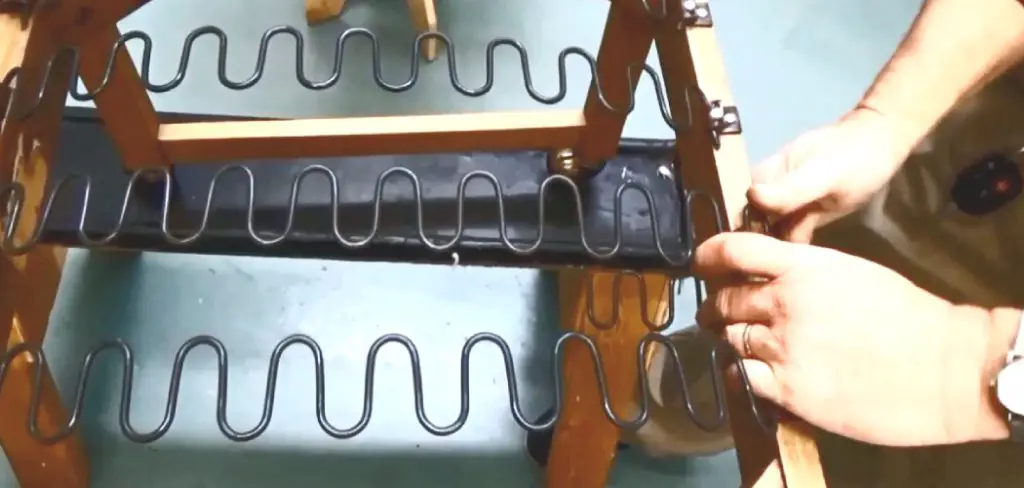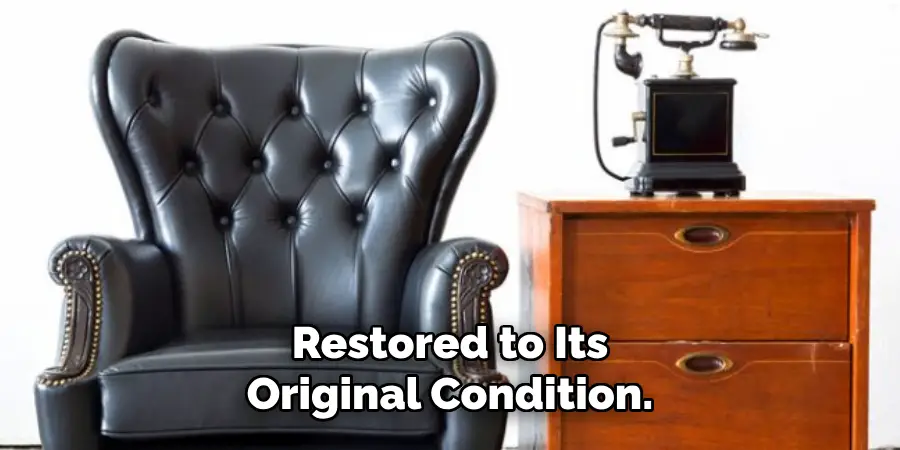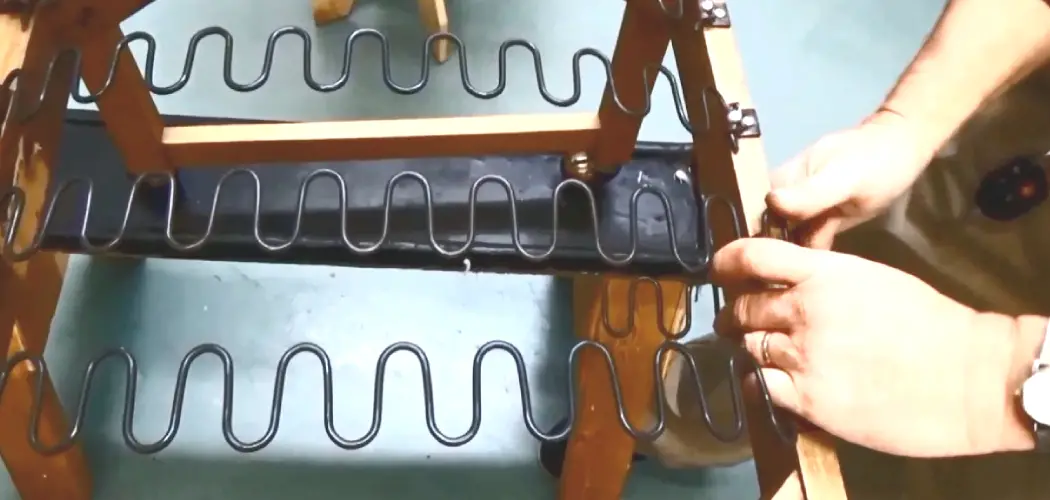When the springs in a chair begin to wear out or break, the chair loses its comfort and functionality. This can happen over time due to regular use, weight stress, or aging materials. Instead of replacing the entire chair, fixing the springs can be a cost-effective and straightforward solution.

With the right tools and some basic knowledge, you can restore your chair to its original comfort and extend its lifespan.
This guide on how to fix springs in a chair will walk you through the steps to repair or replace the springs in your chair efficiently.
Tools You Will Need
Before beginning the process of fixing your chair springs, make sure to gather all the necessary tools. Some of the essential tools required are:
Pliers:
Pliers are a must-have tool when repairing springs in a chair. They will help you grab, twist, and manipulate the springs with ease. Make sure to have both regular pliers and needle-nose pliers for different tasks.
Hammer:
A hammer is necessary for making small adjustments to the spring tension and securing the springs in place.
Pry bar:
A pry bar will come in handy when removing the old springs from the chair frame. It will help you detach them without causing any damage to the surrounding material.
Replacement Springs:
Depending on the type of chair, you may need specific replacement springs. Make sure to purchase high-quality springs that are durable and compatible with your chair’s design.
8 Step-by-step Guidelines on How to Fix Springs in a Chair
Step 1: Remove the Old Springs
- Turn the chair upside down and place it on a flat surface. This will allow you to access the bottom of the seat where the springs are located.
- Use your pliers or pry bar to carefully remove the old springs from the chair frame. Be gentle and avoid damaging any surrounding material.
- Dispose of the old springs properly.

Step 2: Assess the Damage
- Once the old springs are removed, assess the condition of the remaining springs. Check for any wear and tear or signs of damage. This will help you determine which springs need to be replaced.
- Also, check the chair frame for any cracks or damage that may have caused the springs to break in the first place. If there is significant damage, consider reinforcing or repairing it before moving on with replacing the springs.
- Take note of the type and size of the springs you will need to purchase for replacement.
Step 3: Measure and Cut the New Springs
- Using a measuring tape, measure the length and width of the old springs or the space where they were originally placed.
- Use wire cutters to cut new springs to match these measurements. Make sure to leave some extra length on each side to attach them to the chair frame.
- If you are replacing multiple springs, make sure to cut them all to the same length for even support.

Step 4: Attach One End of the Springs to the Chair Frame
- Start with one end of a spring by attaching it to the chair frame using pliers or a hammer and nails.
- Pull the spring taut and secure it in place by bending the wire ends over itself.
- Repeat this step for each spring until they are all attached to one side of the chair frame.
Step 5: Attach the Other End of the Springs
- Once all springs are secured on one side, stretch them across to where they will be attached to the other side of the chair frame.
- Use your pliers or hammer and nails to attach the springs on this end as well.
- Make sure all springs are evenly stretched and secured in place.
Step 6: Adjust Spring Tension
- If the new springs feel too loose, you can tighten them by using your hammer to bend the wire ends closer to each other.
- If they feel too tight, you can loosen them slightly by bending the wire ends away from each other.
- Test out the tension by sitting on the chair and making adjustments until it feels comfortable and supportive.

Step 7: Secure Springs in Place
- Once you have achieved the desired tension, use a hammer to secure the wire ends in their final positions.
- Make sure to add extra nails or staples for reinforcement if needed.
- Gently tug on each spring to make sure it is securely attached and won’t come loose with use.
Step 8: Reattach the Chair Seat
- After all springs are securely attached and adjusted, reattach the chair seat by screwing it back onto the frame.
- Flip the chair over and test its comfort and stability by sitting on it.
- If everything feels good, your chair is now fixed!
Following these steps on how to fix springs in a chair will help you successfully fix the springs in your chair and restore its comfort and functionality. Remember to use high-quality replacement springs, assess the condition of all springs and the chair frame, and make any necessary adjustments for optimal results.
Do You Need Professional Support?
While fixing the springs in a chair can be a simple and cost-effective DIY project, there may be situations where professional assistance is necessary. If the damage to the chair frame is extensive or if you are unsure about the proper method to replace the springs, seeking help from a professional upholsterer or furniture repair specialist could save you time and effort. Professionals have the experience, tools, and materials to handle more complex repairs effectively, ensuring that your chair is restored to its original condition.

Additionally, if the chair holds significant sentimental or monetary value, it may be best to leave the repair in the hands of experts to prevent further damage. Ultimately, the decision depends on the extent of the repair and your comfort level with taking on such a project.
How Much Will It Cost If You Hire a Professional?
The cost of hiring a professional to fix the springs in your chair will depend on various factors such as the extent of damage, type and size of the chair, and location. On average, the cost can range from $50 to $200 for a simple repair job. However, if there are other underlying issues with the chair frame or additional repairs needed, the cost may increase.
It is recommended to get multiple quotes from different professionals and compare their reviews and experience before making a decision. Consider the cost, quality of work, and timeline when choosing a professional for your chair repair needs.
Additional Tips
- Regularly check your chair for any signs of wear or damage to prevent future spring issues.
- If possible, flip the chair upside down and sit on it while repairing or adjusting the springs. This will help you get a better feel for the tension and support needed.
- Keep extra replacement springs on hand for future repairs.
- Consider using reinforcing materials such as webbing or plywood under the seat of older chairs with weaker frames.
- If you are unsure about any steps or feel uncomfortable doing it yourself, seek professional help. Improperly fixed springs could lead to further damage or injury.
Now that you know how to fix springs in a chair, you can confidently tackle this repair and extend the lifespan of your favorite chair. With proper maintenance and care, your chair will provide comfort and support for years to come.
Frequently Asked Questions
Q1: Can I Use Any Type of Springs for Chair Repair?
A1: While there are various types of springs available, it is important to use the same type and size as the original springs in your chair. Using mismatched or improper springs can cause discomfort and potentially damage the chair further.
Q2: How Often Should I Replace Springs in My Chair?
A2: The frequency of spring replacement depends on the quality and usage of your chair. However, a good rule of thumb is to check and replace the springs every 7-10 years or when you start noticing signs of wear and discomfort.
Q3: Can I Use Zip Ties Instead of Nails or Staples?
A3: While zip ties may seem like a convenient alternative, they are not recommended for securing springs in chairs as they can easily break under pressure. It is best to use traditional methods such as nails or staples, for optimal strength and durability.
Q4: Is It Necessary to Replace All Springs in My Chair?
A4: If only a few springs are damaged or worn out, you can replace them individually. However, if the majority of the springs are in poor condition, it is recommended that they be replaced for even support and tension.
Conclusion
Fixing the springs in your chair may seem like a daunting task, but with the right tools and techniques, it can be a simple and cost-effective solution. By following these step-by-step guidelines on how to fix springs in a chair, you can easily repair or replace your chair’s springs and restore its comfort and functionality.
Remember to always prioritize safety and attention to detail when working with tools and materials. Happy fixing!

